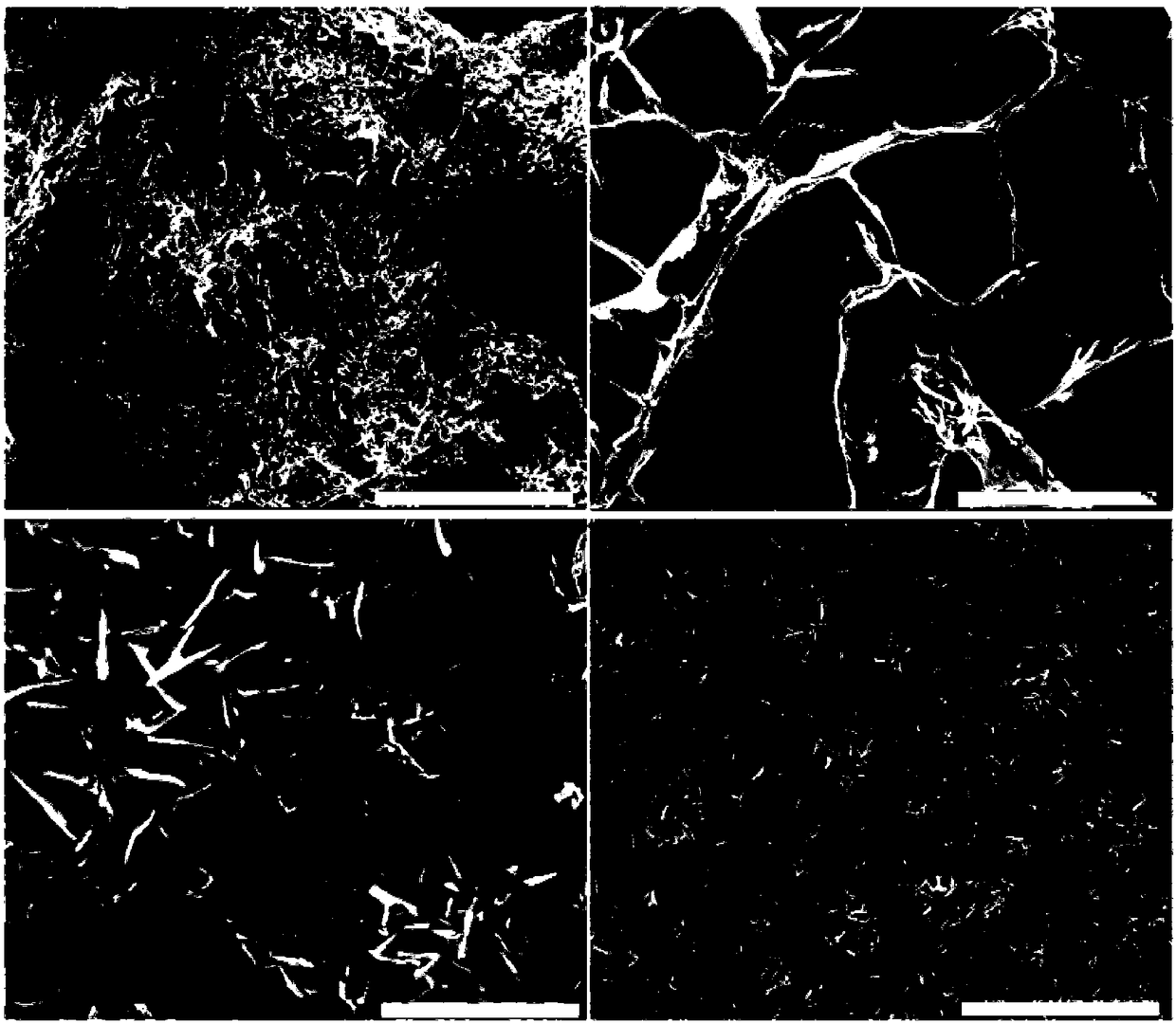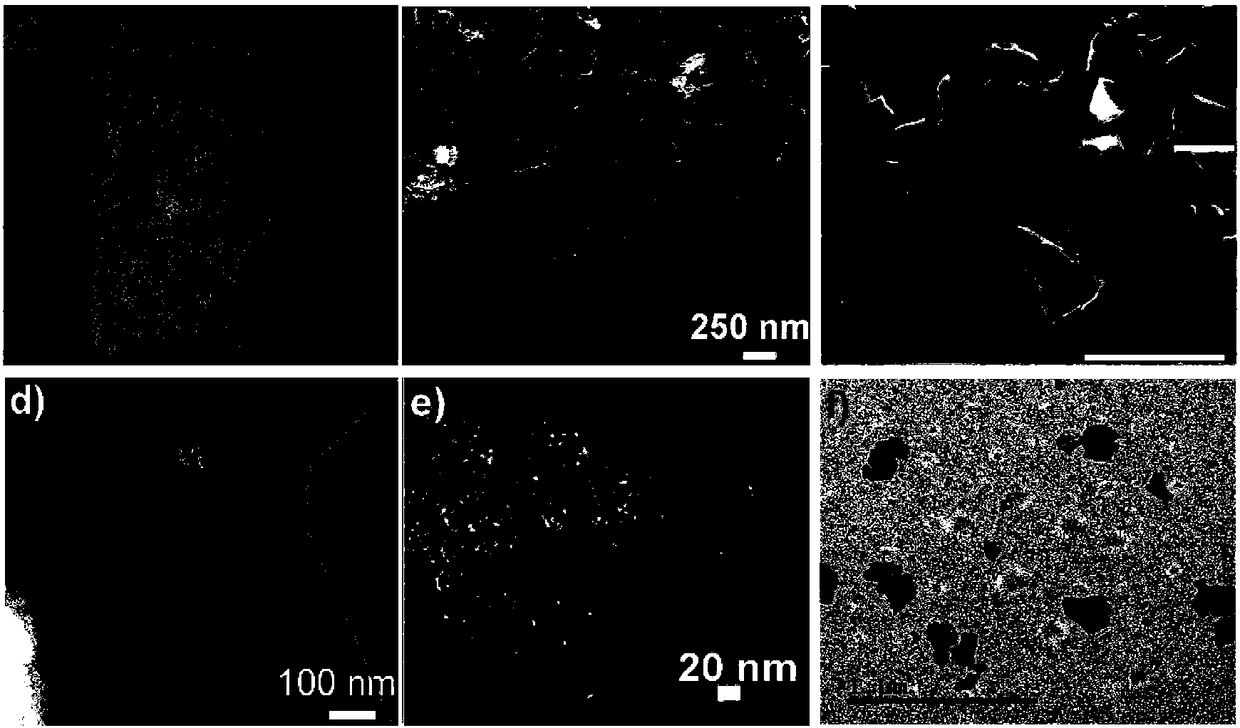Heteroatom-doped porous carbon material and preparation method thereof and application in zinc-air battery
A technology of porous carbon materials and heteroatoms, applied in heteroatom-doped porous carbon materials and its preparation and application in zinc-air batteries, can solve the problems of low catalytic activity, limited material sources, and high preparation costs, and achieve improved Specific surface area, effect of enhancing catalytic activity
- Summary
- Abstract
- Description
- Claims
- Application Information
AI Technical Summary
Problems solved by technology
Method used
Image
Examples
Embodiment 1
[0049] Step (1): Preparation of Biomass Self-Assembly
[0050] Dissolve 1.5 g of the biomass precursor BSA in 20 mL of water, add 8 mmol of sodium hydroxide, and keep stirring at room temperature. After 30 min, the biomass self-assembly can be obtained. Then, the water is removed by freeze-drying method, and the dry biomass self-assembly can be obtained.
[0051] Step (2): Obtaining heteroatom-doped porous carbon materials
[0052] Put the dry biomass self-assembly obtained in step (1) in a tube furnace, and carbonize at 900°C under an inert atmosphere to obtain a heteroatom-doped porous carbon material, denoted as BSA-8 -900, its specific surface area is 1274.1305m 2 g -1 , the pore size distribution is distributed in micropores, mesopores and macropores, showing a multi-level pore distribution.
[0053] Step (3): Test of oxygen reduction reaction of carbon materials and assembly and testing of zinc-air batteries:
[0054] 1. Wash the obtained carbon material several tim...
Embodiment 2
[0058] Step (1): Dissolve 1.5 g of the biomass precursor BSA in 20 mL of water, add 8 mmol of sodium hydroxide, and keep stirring at room temperature. After 30 min, the biomass self-assembly can be obtained. Then, the water is removed by freeze-drying method, and the dry biomass self-assembly can be obtained.
[0059] Step (2): Obtaining heteroatom-doped porous carbon materials
[0060] Put the dried biomass self-assembled body obtained in step (1) in a tube furnace, and carbonize it at 700°C under an inert atmosphere to obtain a heteroatom-doped porous carbon material, denoted as BSA-8 -700, which has a surface area of 548.7413m 2 g -1 , the pore size distribution is mainly concentrated in the micropore area, and there is a small amount of distribution in the macropore area.
[0061] Step (3): Test of oxygen reduction reaction of carbon materials and assembly and testing of zinc-air batteries:
[0062] 1. Wash the obtained carbon material several times with secondary wa...
Embodiment 3
[0066] Step (1): Dissolve 1.5 g of the biomass precursor BSA in 20 mL of water, add 8 mmol of sodium hydroxide, and keep stirring at room temperature. After 30 min, the biomass self-assembly can be obtained. Then, the water is removed by freeze-drying method, and the dry biomass self-assembly can be obtained.
[0067] Step (2): Obtaining heteroatom-doped porous carbon materials
[0068] Put the dry biomass self-assembly obtained in step (1) in a tube furnace, and carbonize at 500°C under an inert atmosphere to obtain a heteroatom-doped porous carbon material, denoted as BSA-8 -500, its specific surface area is 17.3566m 2 g -1 , the pore size distribution mainly has a small amount of distribution in the macropore area.
[0069] Step (3) Oxygen reduction reaction test of carbon materials and zinc-air battery assembly and testing:
[0070] 1. Wash the obtained carbon material several times with secondary water, and after vacuum drying, take a small amount of carbon material, ...
PUM
| Property | Measurement | Unit |
|---|---|---|
| Pore size distribution range | aaaaa | aaaaa |
| Specific surface area | aaaaa | aaaaa |
| Surface area | aaaaa | aaaaa |
Abstract
Description
Claims
Application Information
 Login to View More
Login to View More - R&D
- Intellectual Property
- Life Sciences
- Materials
- Tech Scout
- Unparalleled Data Quality
- Higher Quality Content
- 60% Fewer Hallucinations
Browse by: Latest US Patents, China's latest patents, Technical Efficacy Thesaurus, Application Domain, Technology Topic, Popular Technical Reports.
© 2025 PatSnap. All rights reserved.Legal|Privacy policy|Modern Slavery Act Transparency Statement|Sitemap|About US| Contact US: help@patsnap.com



